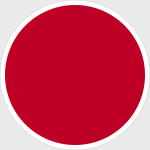DeAgostini DAWF14 Imperial Japanese Navy Aichi D3A1 Type 99 Model 11 "Val" Dive Bomber - PO3c Tokuji Iizuka, Akagi, Pearl Harbor, Hawaii, December 7th, 1941 [With Collector Magazine] (1:72 Scale)
"We have resolved to endure the unendurable and suffer what is insufferable."
- Japanese Emperor Hirohito speaking to the Japanese people after the atomic bombings, August 1945
 The Aichi D3A Type 99 Carrier Bomber (Allied reporting name "Val") is a World War II carrier-borne dive bomber. It was the primary dive bomber of the Imperial Japanese Navy (IJN) and was involved in almost all IJN actions, including the attack on Pearl Harbor.
The Aichi D3A Type 99 Carrier Bomber (Allied reporting name "Val") is a World War II carrier-borne dive bomber. It was the primary dive bomber of the Imperial Japanese Navy (IJN) and was involved in almost all IJN actions, including the attack on Pearl Harbor.
The Aichi D3A was the first Japanese aircraft to bomb American targets in the war, commencing with Pearl Harbor and U.S. bases in the Philippines, such as Clark Air Force Base. Vals sank more Allied warships than any other Axis aircraft.
In mid-1936, the Japanese Navy issued the 11-Shi specification for a monoplane carrier-based dive bomber to replace the existing D1A biplane then in service. Aichi, Nakajima, and Mitsubishi all submitted designs, with the former two subsequently being asked for two prototypes each.
The Aichi design started with low-mounted elliptical wings inspired by the Heinkel He 70 Blitz. It flew slowly enough that the drag from the landing gear was not a serious issue, so fixed gear was used for simplicity. The aircraft was to be powered by the 529 kW (709 hp) Nakajima Hikari 1 nine-cylinder radial engine.
The first prototype was completed in December 1937, and flight trials began a month later. Initial tests were disappointing. The aircraft was under powered and suffered from directional instability in wide turns, and in tighter turns it tended to snap roll. The dive brakes vibrated heavily when extended at their design speed of 200 knots (370 km/h), and the Navy was already asking for a faster diving speed of 240 knots (440 km/h).
The second aircraft was extensively modified before delivery to try to address the problems. Power was increased by replacing the Hikari with the 626 kW (839 hp) Mitsubishi Kinsei 3 in a redesigned cowling, and the vertical tail was enlarged to help with the directional instability. The wings were slightly larger in span and the outer sections of the leading edges had wash-out to combat the snap rolls, and strengthened dive brakes were fitted. These changes cured all of the problems except the directional instability, and it was enough for the D3A1 to win over the Nakajima D3N1.
Pictured here is a 1:72 scale replica of an Imperial Japanese Navy D3A1 Type 99 Model 11 "Val" dive bomber that was piloted by PO3c Tokuji Iizuka, who was embarked upon the aircraft carrier Akagi, then attacking Pearl Harbor, Hawaii, on December 7th, 1941.
Item en route to us!
Dimensions:
Wingspan: 7-3/4-inches
Length: 6-1/4-inches
Release Date: October 2019
Historical Account: "The Slayer's Axe" - Shortly before 08:00 on the morning of December 7th, 1941, Japanese aircraft from six fleet carriers struck the Pacific Fleet as it lay in port at Pearl Harbor, and - in the ensuing two attack waves - wrought devastation on the Battle Line and on air and military facilities defending Pearl Harbor.
On board Arizona, the ship's air raid alarm went off about 07:55, and the ship went to general quarters soon thereafter. Shortly after 08:00, a bomb dropped by a high-altitude Kate bomber from the Japanese carrier Kaga hit the side of the #4 turret, glancing off and into the deck below starting a small fire which caused minimal damage.
At 08:06, a bomb from a Hiryu Kate hit between and to starboard of Turrets #1 & 2. The subsequent explosion, which destroyed the forward part of Arizona, was due to the detonation of the ammunition magazine, located in an armored section under the deck. Most experts seem to agree that the bomb could hardly have pierced the armor. Instead, it seems widely accepted that the black powder magazine (used for aircraft catapults) detonated first, igniting the smokeless powder magazine (used for the ship's main armament). A 1944 BUSHIP report suggests that a hatch leading to the black powder magazine was left open, with perhaps inflammable materials stocked nearby. A US Navy historical site history.navy.mil goes as far as to suggest that black powder might have been stockpiled outside of the armored magazine. However, it seems unlikely that a definitive answer to this question might be found. Credit for the hit was officially given to Japanese pilot Tadashi Kusumi. The cataclysmic explosion ripped through the forward part of the ship, touching off fierce fires that burned for two days.





 Finally found a Val!
Finally found a Val! 



 Val
Val